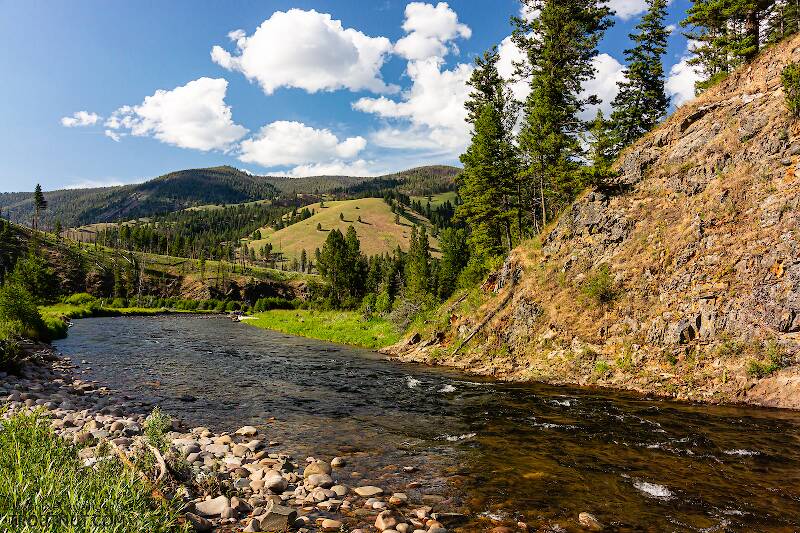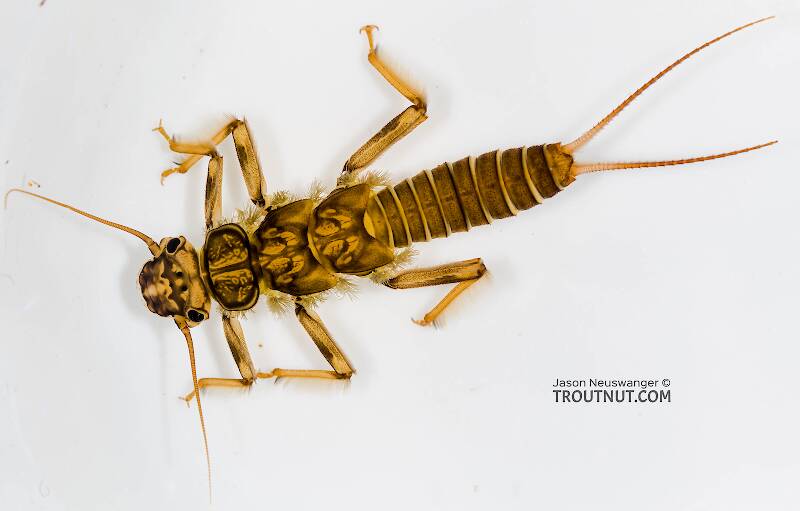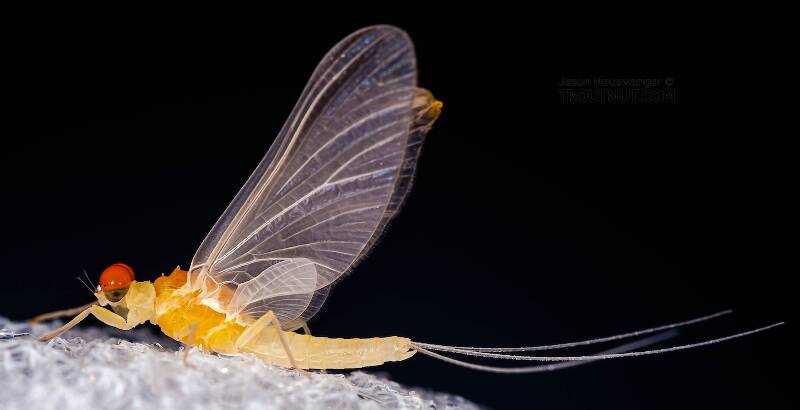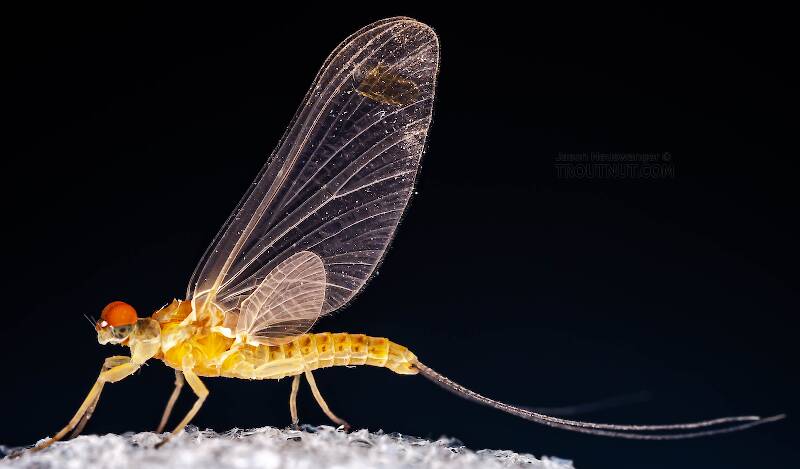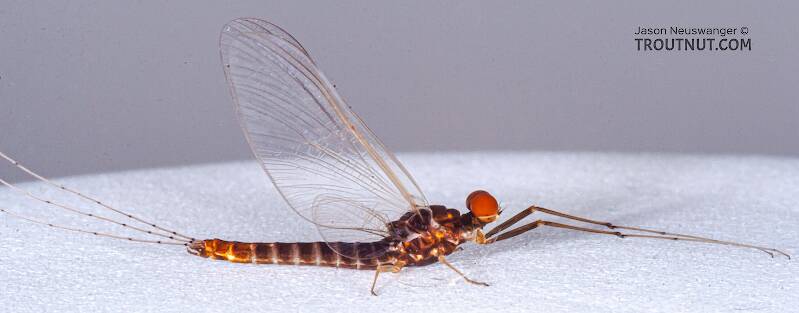
Blue-winged Olives
Baetis
Tiny Baetis mayflies are perhaps the most commonly encountered and imitated by anglers on all American trout streams due to their great abundance, widespread distribution, and trout-friendly emergence habits.
Featured on the forum

Troutnut is a project started in 2003 by salmonid ecologist Jason "Troutnut" Neuswanger to help anglers and
fly tyers unabashedly embrace the entomological side of the sport. Learn more about Troutnut or
support the project for an enhanced experience here.
Sulphur Duns
Like most common names,"Sulphur Dun" can refer to more than one taxon. They're previewed below, along with 5 specimens. For more detail click through to the scientific names.
Mayfly Species Ephemerella dorothea dorothea
These are often called Sulphur Duns.
Ephemerella dorothea consists of two subspecies, which both produce excellent action. Ephemerella dorothea dorothea is a small species of Sulphur in the East, and Ephemerella dorothea infrequens (formerly Ephemerella infrequens) is one of the two main Pale Morning Dun hatches of the West. The remainder of this page focuses on the dorothea dorothea subspecies, and Ephemerella dorothea infrequens is discussed separately on its own page.
This is one of the most challenging mayfly hatches on Eastern waters. On many streams, it follows or overlaps hatches of the larger, lingering Ephemerella invaria.
This is one of the most challenging mayfly hatches on Eastern waters. On many streams, it follows or overlaps hatches of the larger, lingering Ephemerella invaria.
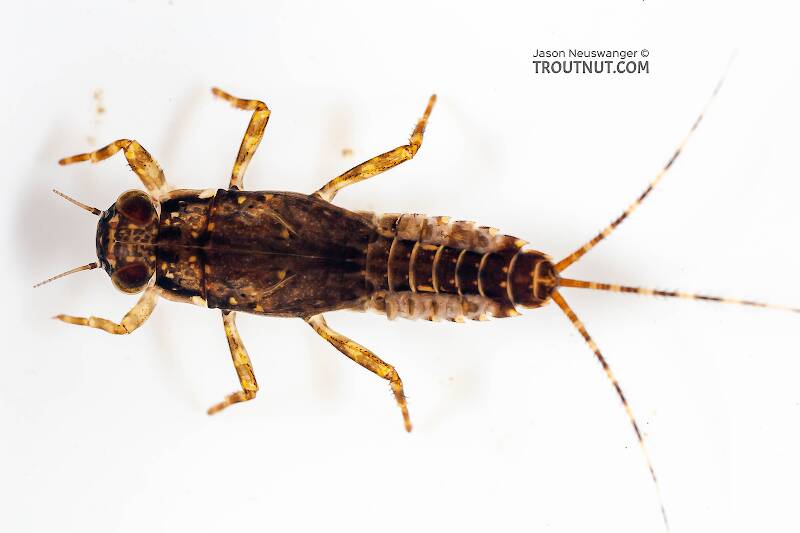
I keyed this nymph carefully under a microscope to check that it's Ephemerella dorothea.
Mayfly Species Ephemerella invaria
These are often called Sulphur Duns.
This species, the primary "Sulphur" hatch, stirs many feelings in the angler. There is nostalgia for days when everything clicked and large, selective trout were brought to hand. There is the bewildering memory of towering clouds of spinners which promise great fishing and then vanish back into the aspens as night falls. There is frustration from the maddening selectivity with which trout approach the emerging duns--a vexing challenge that, for some of us, is the source of our excitement when Sulphur time rolls around.
Ephemerella invaria is one of the two species frequently known as Sulphurs (the other is Ephemerella dorothea). There used to be a third, Ephemerella rotunda, but entomologists recently discovered that invaria and rotunda are a single species with an incredible range of individual variation. This variation and the similarity to the also variable dorothea make telling them apart exceptionally tricky.
As the combination of two already prolific species, this has become the most abundant of all mayfly species in Eastern and Midwestern trout streams.
Ephemerella invaria is one of the two species frequently known as Sulphurs (the other is Ephemerella dorothea). There used to be a third, Ephemerella rotunda, but entomologists recently discovered that invaria and rotunda are a single species with an incredible range of individual variation. This variation and the similarity to the also variable dorothea make telling them apart exceptionally tricky.
As the combination of two already prolific species, this has become the most abundant of all mayfly species in Eastern and Midwestern trout streams.
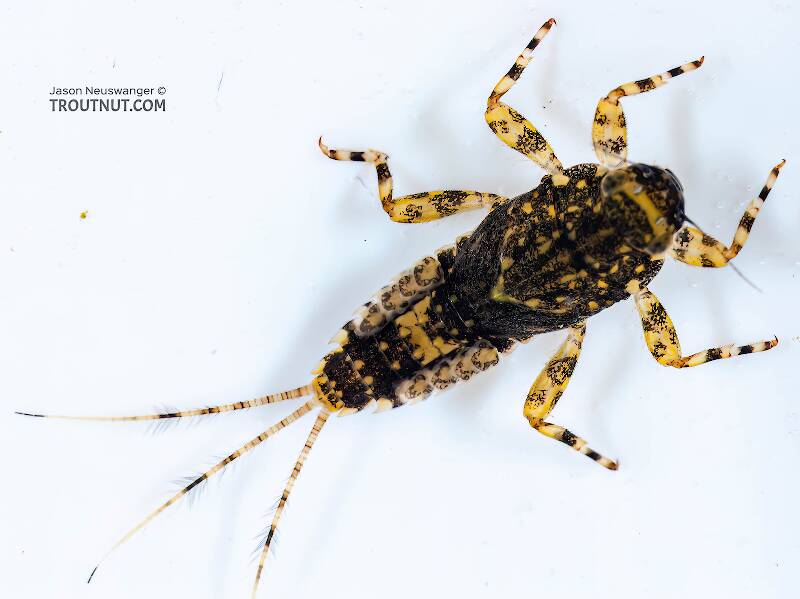
This small Ephemerella invaria nymph was at least a month away from emergence.
See 42 more specimens...

